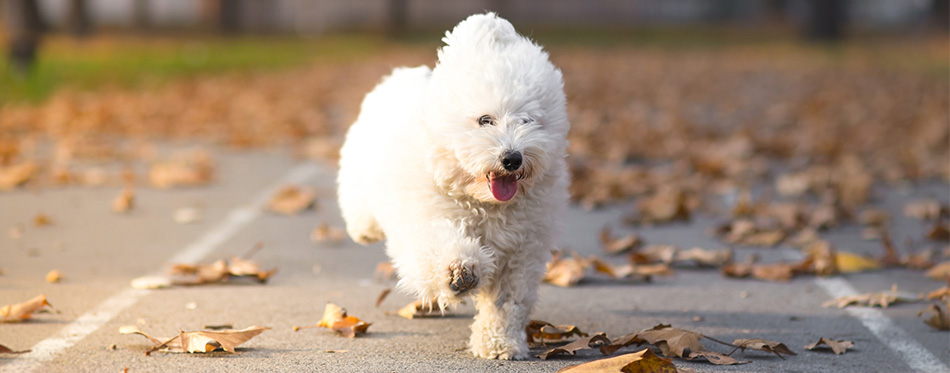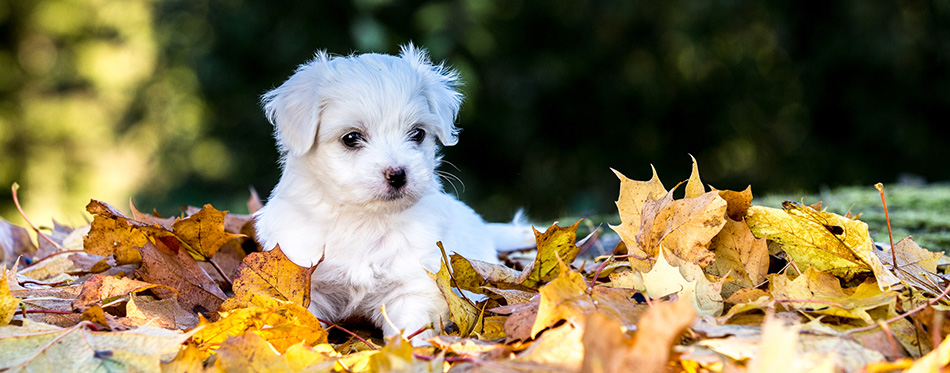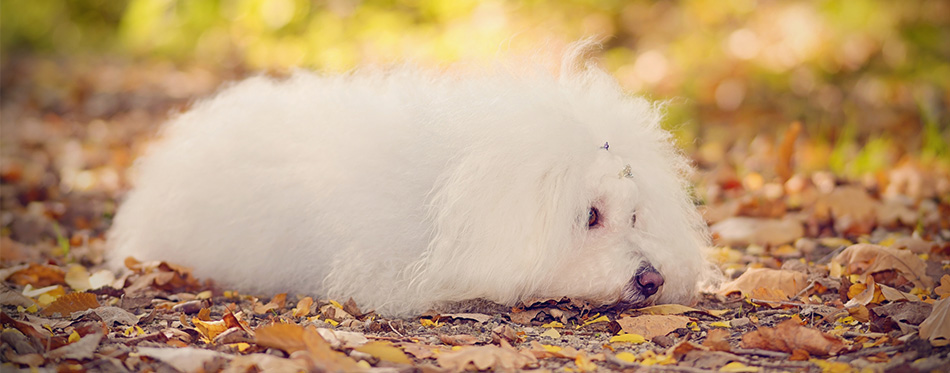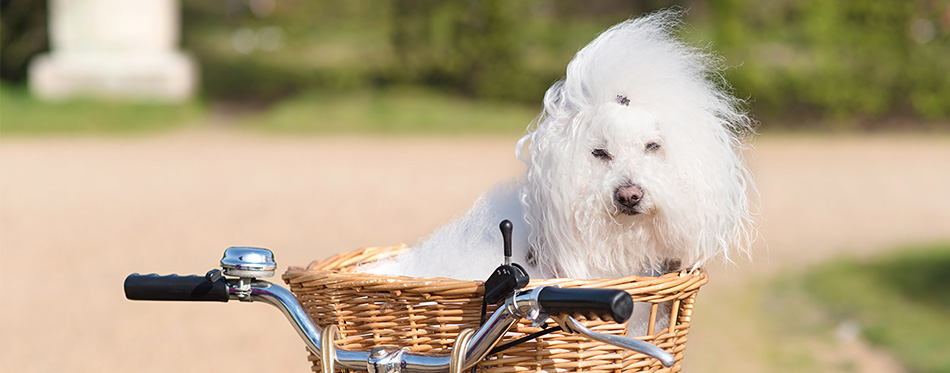The Bolognese Dog is one of the most eye-catching breeds due to its pure white, fluffy coat and its small, stocky appearance. With an incredibly long history behind it and recognition from all the top dog breed Associations across the world, the Bolo Dog is a popular pet for many reasons. It is loyal, playful and keen to please its owner, making it the perfect choice for many families and adult owners alike. In this article we’re going to cover some of the top facts you need to know about this beautiful breed and we’ll take a detailed look at what dog care might typically look like for the Bolognese Dog. Let’s get started!

History of the Bolognese Dog Breed
The Bolognese Dog originates from Bologna, Italy (hence its name) and has been documented as long ago as the 11th century. The breed was popular amongst nobles for its charming personality and looks and has been recorded as a popular pet choice for famous individuals and celebrities throughout history. Due to its incredibly long history, the Bolognese dog has been selectively bred to maintain its desired characteristics and has since been recognized by major Kennel Clubs and Associations all over the world. Some of the main associations which recognize this brilliant breed are the American Kennel Club (AKC), the Kennel Club of Great Britain (KCGB), and the American Canine Association (ACA).
Quick Facts About the Bolognese Dog
Before we learn all there is to know about dog care for this beautiful breed, let’s take a minute to learn some quick facts. It’s important to know the dog’s expected height, weight, coat color and type, characteristics and other facts so you have some idea of what to expect before buying or adopting a Bolognese dog. So, here are some of the top facts about this wonderful dog breed.
- Male Bolognese dogs typically grow between 10.5 to 12 inches while females grow between 10 to 11 inches tall. Fully grown adult Bolognese Dogs weigh between 4.5-9lbs with males typically weighing more than females.
- Healthy and happy Bolognese Dogs typically live between 12 to 14 long years and are the perfect puppy companion.
- This beautiful breed is sometimes called the ‘Bichon Bolognese’, ‘Bolo’ or ‘Bolo Dog’.
- The Bolognese Dog breed is small and stocky with a beautiful white, long, and fluffy coat covering its body. The thick coat barely sheds making the Bolognese Dog breed a perfect choice for pet parents with allergies or who wish for a low-maintenance canine companion.
- The Bolo Dog originated in Bologna, Italy and served as a loyal canine companion to noblemen in the country. There were sometimes given as pets to Royal Families across the world as they had such a great reputation for being an easy-going, loyal and intelligent dog breed.
- The Bichon Bolognese can be quite anxious, particularly when separated from its owner for a long period of time. For this reason, pet parents shouldn’t regularly leave their pup alone for longer than 8 hours.

Thing You Should Know
As we just learned, the Bolognese Dog breed commonly suffers from separation anxiety which means this precious pooch isn’t very well suited to puppy parents who spend a lot of time away from home. Because of this anxiety, they can be difficult to train at times so pet parents should be careful and patient when raising a Bolognese Dog. If you have a 9-5 job or spend a lot of time away from home then, unfortunately, this anxious doggo might not be the best choice for you.
However, if you aren’t away from home for very long or if you have a family to keep your dog company then the Bolognese Dog could be your perfect canine companion. Due to the breeds loving and friendly nature, it is perfectly suited to family life and makes the ideal play buddy for young children and other puppy-friendly pets.
Health
Thankfully there are no specific health conditions or concerns that are common among the Bolognese Dog breed. This is due to its long history and subsequent recognition from major Kennel Clubs and Associations which have created a breed standard. By regulating and maintaining a breed standard, breeders have been able to eliminate health conditions in the Bolo Dog other than a few which can occur naturally during any dog’s life. One of the main conditions which can affect the Bolognese Dog is patellar luxation, while another is Progressive Retinal Atrophy.
- Patellar luxation
This unfortunate condition can appear in many dog breeds of a similar physical build and size to the Bolognese Dog. Put simply, it is a condition which results in the malformation of the kneecap causing it to dislocate from its natural position and subsequently float in place. As the condition is found in many dog breeds, medical assistance is readily available; however, in most cases, it isn’t necessary. Unless the condition is left undiagnosed or mistreated, patellar luxation can usually be monitored and controlled through lifestyle changes.
- Progressive retinal atrophy
Progressive Retinal Atrophy (or PRA as it’s often called) is an eye condition which affects a lot of different dog breeds. Essentially, the condition results in minor eye problems which can deteriorate into severe problems such as blindness or cataracts. While the effects of this condition can be severe, they can usually be avoided through thorough medical exams including eye tests. It’s important to know that this condition can often affect young pups more than older ones so they should be checked while they’re young. Like patellar luxation, this condition can be monitored and controlled to some extent through lifestyle changes.
Although these conditions can occur naturally, you can greatly reduce your dog’s risk of developing these conditions through a healthy lifestyle. Nutritious food, adequate daily exercise, and a solid grooming routine are all things which will improve your pup’s health and minimize the risk of health conditions. Furthermore, by purchasing or adopting a Bolognese puppy from a careful and responsible breeder, you can ensure there will be no hereditary conditions present. Responsible breeders should provide a full medical history of your pup’s parents and will conduct health tests to ensure your pup is fit and healthy. A healthy Bolognese dog that receives the correct dog care and medical treatment when necessary will typically live between 12 to 14 long and happy years.
Training
Training and socializing are as important for the Bolognese puppy as they are for any other dog breed. Proper training and socializing should be carried out while the pup is young to ensure they grow up to become a loving, friendly and obedient adult doggo. While the Bolognese Dog isn’t stubborn or aggressive, its playful nature could make it difficult to train at times if the pup becomes easily distracted. When training your pup, make sure there aren’t distractions lying around such as toys, treats, wires or anything else that could distract a curious young canine. Keep the training sessions brief, focused and only regarding one aspect of training at a time.
It’s important to use positive reinforcement when training a young pup. Crate training, stay, recall and toilet training should all have some form of positive reward to keep your dog interested and excited to learn. You should never show aggression when training or use negative reinforcement as this has been proven to be ineffective and results in the appearance of negative behaviors. Instead, toys, tasty treats, and affectionate petting should be used every time your pup carries out an action to let them know they’ve done a good job.
Related Posts: Dog Treats and Dog Toys
Exercise
Since the Bolo Dog is calm, relaxed and easygoing, its exercise requirements aren’t exhausting by any means. For this chilled-out doggo, a combination of short walks and playing indoors or outdoors will be enough. Playing with your pup in a fenced yard would be a great way to exercise them while having fun for you both. For this reason, a Bolognese puppy could be perfectly suited to apartment life. Just ensure that your precious pooch regularly receives playtime and can run around in the home and you be sure that they’ll be happy and healthy. You could also incorporate training into your playtime to ensure your pup receives mental and physical stimulation at the same time.

Nutrition
The Bolo Dog requires a diet of high-quality dog food either in the form of homemade food or premade food which is available from supermarkets. Dog food should be nutritious and have high levels of animal protein. While there aren’t any specific dietary requirements for the Bolognese Dog breed, diets should be carefully controlled to minimize the risk of diet-based medical conditions. If your precious pooch begins to gain weight then you may need to reduce the amount of food you provide them or increase their amount of exercise. Or, if your pup beings to lose weight, you may need to increase your dog’s food intake or limit their daily exercise. This takes time and patience so don’t worry if you can’t get the hang of it immediately, you can always seek advice from your vet if you have any questions or concerns.
For more guides on choosing the right dog food, you may wish to check out our reviews of the best dog food for small dogs, organic dog food, grain free dog food, wet dog food and puppy food.
Grooming
The Bichon Bolognese Dog doesn’t have any specific grooming requirements other than typical grooming habits. The only aspect of grooming you’ll need to watch out for with this breed is trimming the hair around its eyes. Since the Bolognese Dog’s coat is long and fluffy, it can obstruct the dog’s vision if it is left to grow unruly around the eyes. So, carefully trimming the area around your dog’s eyes will help to keep them safe and healthy and ensures they look good too. You might choose to trim the main body of the coat to around one inch in length, keeping the coat around the head longer to achieve the popular ‘mop-head’ appearance. Regular brushing is recommended, particularly if your Bolo Dog has a long coat as this will help to prevent matting while keeping your dog clean. Occasional bathing is also necessary to keep the coat clean and fresh-looking.
Cleaning your pup’s eyes and ears is important as they often become lodged with dirt and debris. Check these areas regularly and clean them with a clean, damp cloth to remove any dirt. Another important aspect of dog care which you’ll need to carry out is nail trimming. This should be done as regular as your dog needs it which can vary greatly from animal to animal. While some dogs might require this grooming once per week, others might only require it once per month.
You may find the following dog grooming guides interesting: dog bathtub, dog wipes, dog ear cleaner, dog nail clippers, dog dryer and dog grooming gloves.
Temperament
As you’ve learned in this article, the Bolognese Dog is loving, affectionate, playful, and makes the perfect family member for adults or children of any age. However, like many other small dog breeds, the Bolo Dog can sometimes suffer from ‘small dog syndrome’. Much like the human equivalent to this behavior, the dog confuses the master-pet relationship and believes it is in control of the relationship with its owners. While this doesn’t present an immediate problem, it becomes most obvious when the dog is separated from its owners. These dogs can then suffer from severe separation anxiety whenever they are removed from their owner’s company. For this reason, it’s incredibly important to train your Bolognese puppy at a young age (ideally using crate training) to teach them to be independent and not to become anxious when you are away from home.
Other than separation anxiety, there are no other reasons for concern with this spirited little pooch. Just be sure to train and socialize them while they’re young and as your pooch grows up, they’ll be a well-behaved, loving, and playful pup.

Final Thoughts
As we’ve learned, there are lots of interesting facts about the Bolognese dog breed and several aspects of dog care which you should know about before adopting or buying a sweet little Bolognese puppy. From grooming to exercise, training to feeding and just about everything in between, you now have the knowledge to go ahead and confidently raise your own Bolo Dog. You’ll also have an idea if this breed will suit you and your family’s lifestyle and how to raise this loving and affectionate breed.
Sources:
- Bolognese – AKC
- The Bolognese History of the Breed – Bolo Club of America

